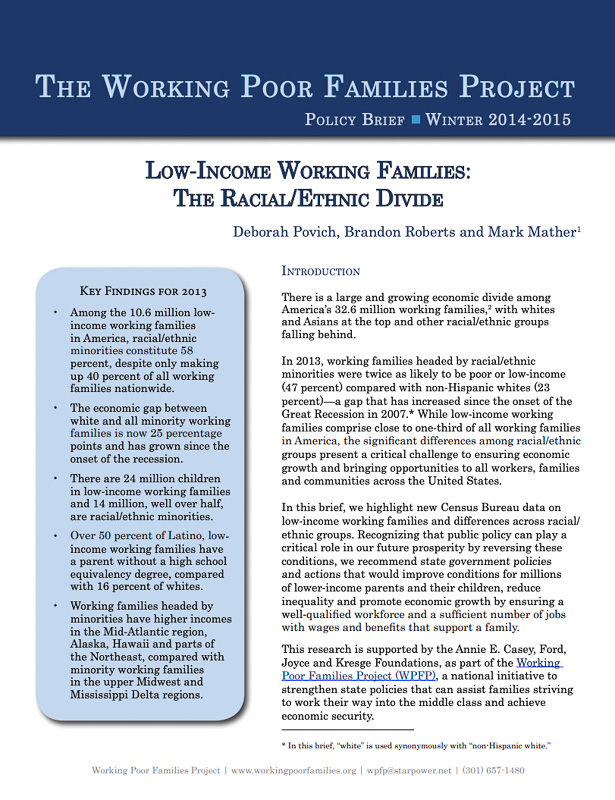
Race/Ethnic Income Gap Growing Among U.S. Working Poor Families
In 2013, U.S. working families headed by racial/ethnic minorities were twice as likely to be poor or low-income (47 percent) compared with non-Hispanic whites (23 percent) according to a new report from the Working Poor Families Project in collaboration with the Population Reference Bureau (PRB).
This gap has increased since the onset of the Great Recession in 2007, reflecting a “large and growing economic divide” with Hispanic and black families falling behind, the report concludes.
Key findings:
- Among the 10.6 million U.S. low-income families with an employed adult in 2013, racial/ethnic minorities constitute 58 percent, despite only making up 40 percent of all working families nationwide.
- The economic gap between non-Hispanic white and all minority working families is now 25 percentage points.
- There are 24 million children growing up in low-income working families and 14 million, well over half, are racial/ethnic minorities.
- More than 50 percent of Hispanic, low-income working families have a parent without a high school equivalency degree, compared with 16 percent of non-Hispanic whites.
- Working families headed by minorities have higher incomes in the Mid-Atlantic region, Alaska, Hawaii, and parts of the Northeast, compared with minority working families in the upper Midwest and Mississippi Delta regions.
“Disparities cannot be erased overnight, but there are policies that can help reduce the economic gaps between groups,” notes Mark Mather, associate vice president for U.S. Programs at PRB and report co-author. Examples include increased access to education and training for people in low-income families, and initiatives that “make work pay” such as wage minimums, paid sick leave, tax credits, and access to retirement savings plans, he says.
A 2014 PRB Population Bulletin, “The Demography of Inequality,” showed that eliminating racial/ethnic economic differences would potentially reduce the number of U.S. children in poverty by 45 percent in 2050, compared with the projected number of poor children if current disparities persist.
Based on newly released Census Bureau data, the Working Poor Families Project report was supported by the Annie E. Casey, Ford, Joyce, and Kresge Foundations.

 ">
">